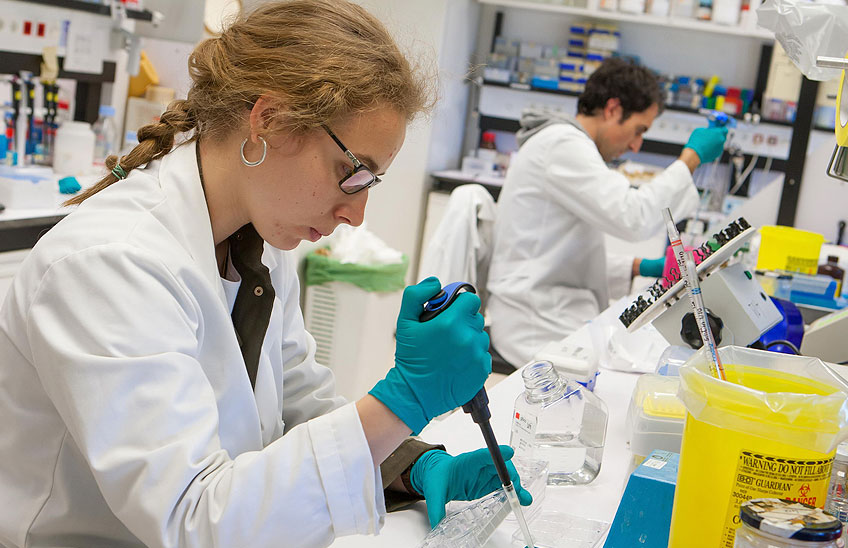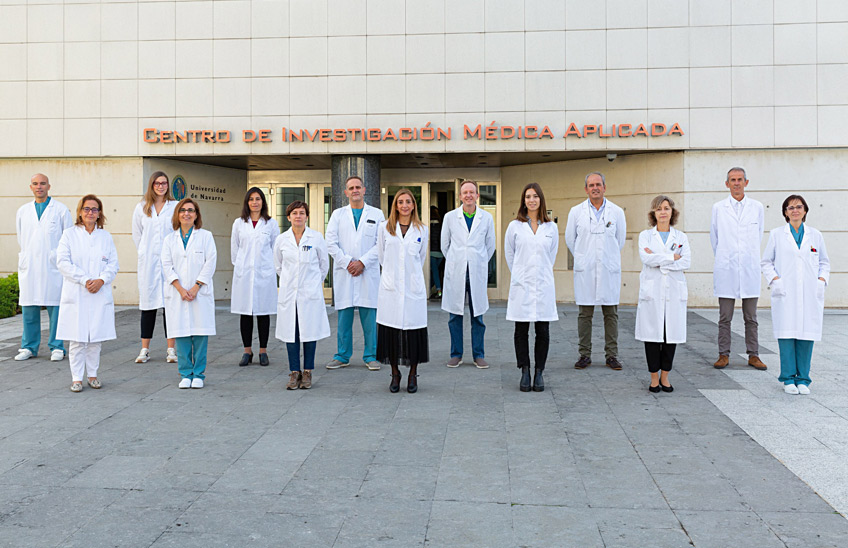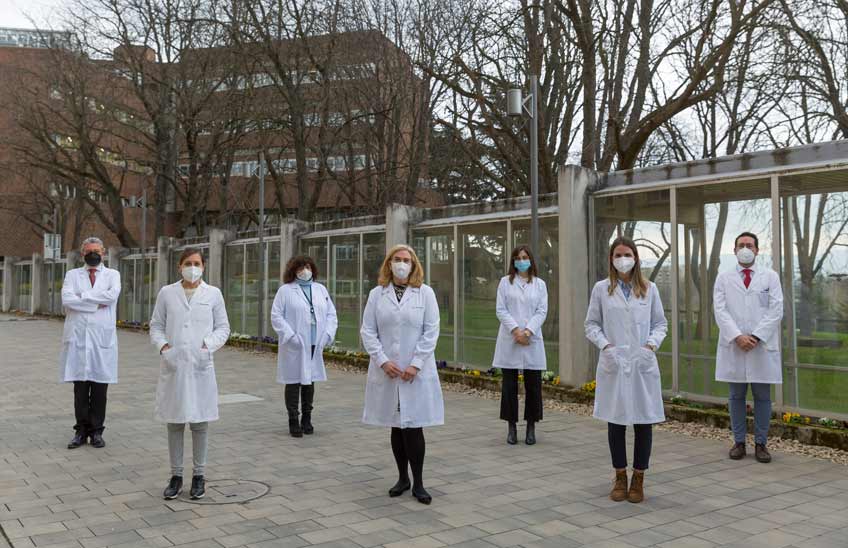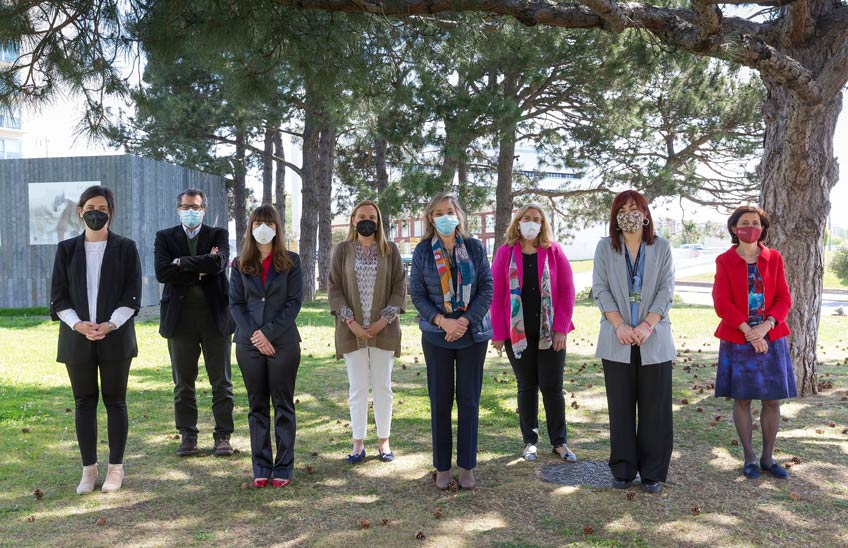The University of Navarra participates in a consortium to diagnose non-alcoholic fatty liver disease in a faster and more efficient way.
The project EHGNA is financed by the Government of Navarre and has an estimated duration of two years.
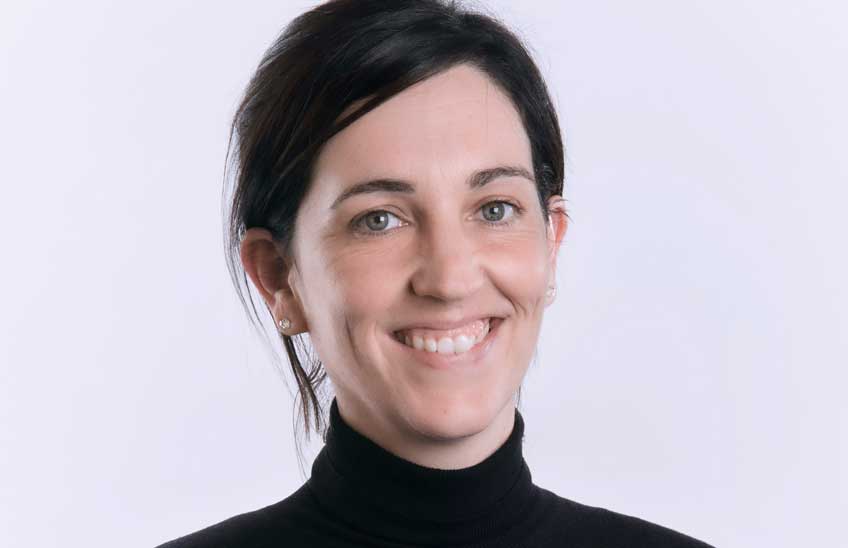
FotoManuel Castells/<br>Itziar Abete
31 | 03 | 2021
A consortium composed of the CimaThe University of Navarra, the University of Navarra and the Public University of Navarra are going to work together, with the goal to open a possible non-invasive way of identification and sub-diagnosis for non-alcoholic fatty liver disease. The project called EHGNA is funded by the Government of Navarra and has an estimated duration of two years.
Non-alcoholic fatty liver disease is associated with obesity and diabetes. It currently affects 9 million Spaniards, of whom 1.1 million are likely to develop other more serious complications such as non-alcoholic cirrhosis. Nowadays there is no specific pharmacological treatment for this disease, except for the recommendation of weight loss. It is also the leading cause of liver transplantation, surpassing hepatitis and alcoholic liver disease. Given the difficulties in its diagnosis, it is necessary to develop different methods to identify the disease and to be able to act with greater precision and speed.
"The idea is to use samples and data from a previous project carried out on people with the disease who underwent long-term personalized nutritional treatment deadline (24 months), and compare all that information with samples from control participants without the disease," says Itziar Abete Goñi, a researcher at research center in Nutrition at the University of Navarra and director of project.
"In addition, artificial intelligence will be applied to integrate and combine all the information obtained from the latest techniques (omics) with specific markers indicating more advanced stages of the disease (fibrogenic, carcinogenic), with information from images (MRI), anthropometric information and Biochemistry , thus obtaining a more accurate knowledge of the context of the disease, the phase of development of the disease and its response to nutritional treatment," he adds.
The combination of information from both the usual and the most advanced methodology would allow an alternative and more precise diagnosis than that made until now by a biopsy. "It will be possible to follow the state of the disease and its evolution more precisely, promoting the early diagnosis of patients who currently go unnoticed and reversing the evolution of the disease towards irreversible situations," says Itziar Abete.
A capsule to treat the disease
The University of Navarra and the Public University of Navarra are also working on another project, called MICROLIVER, on the design of a biomedical device subject capsule that allows the collection of sample intestinal, in different areas of the digestive system, for the study of the intestinal flora (microbiome). The information will help to treat microbiota-related diseases, in particular non-alcoholic fatty liver disease. An additional goal of this project is to develop new therapies for this disease through the administration of encapsulated probiotics.
The research is funded by the department of University, Innovation and Digital Transformation of the Government of Navarra, within the section of Grants to Technology Centers and Organizations of research for the realization of collaborative projects research and development .

